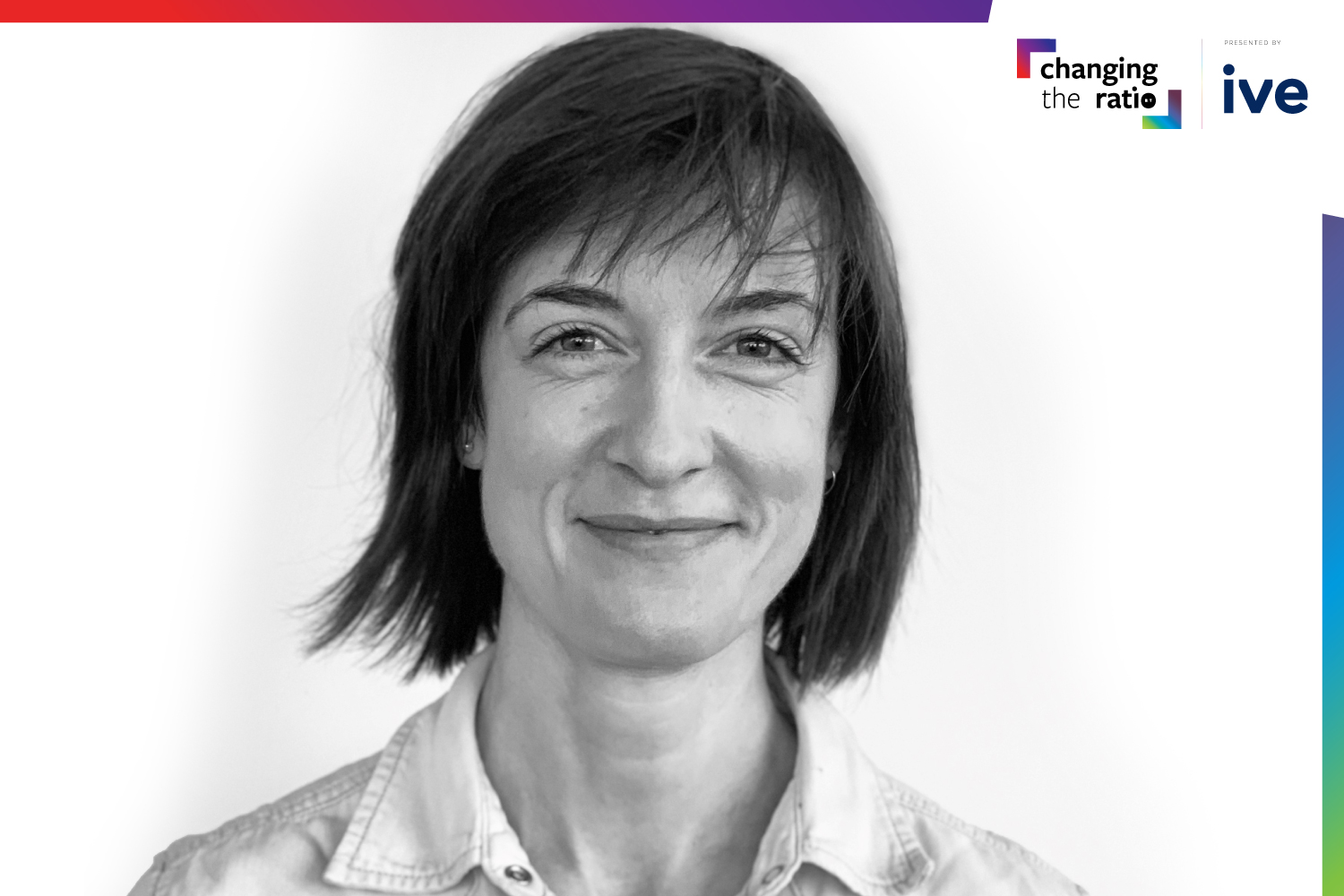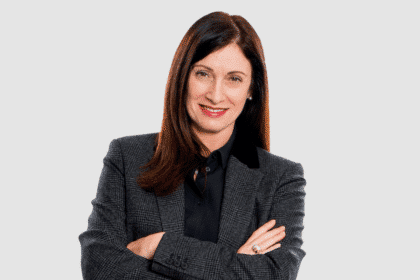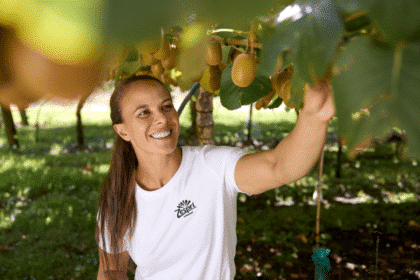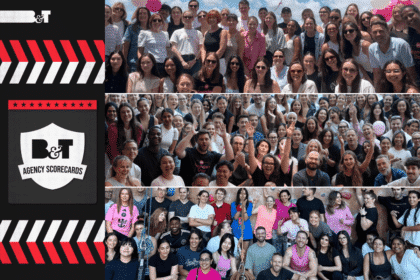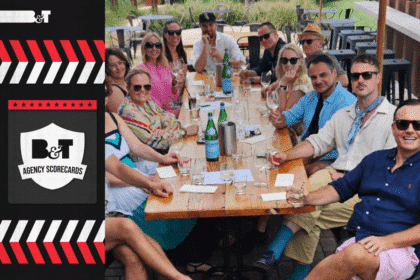B&T’s Changing the Ratio breakfasts are an excellent opportunity to tackle social and culture issues impacting the industry, and the world around us more generally too.
Between events we’re also sharing our Changing the Ratio content series, which spotlights some of the amazing diversity and inclusion work being done in our industry.
Kate Rourke is iStock’s head of creative insights for APAC. She spoke to B&T about iStock’s latest diversity research, including new findings on the visual representation of LGBTQIA+ people.
Our theme for Changing the Ratio this year is Belonging: It Starts With You. Is that an idea that resonates with you and your work?
It really does. COVID has impacted our entire lives and we have either had to or chose to, make certain changes in our lives because of the pandemic. However, our sense of belonging through our values and beliefs, communities we are part of, hobbies we practise, businesses we work in or buy from and staying close to our friends and family, has intensified during this period.
For Australia, visually I’ve seen that sense of belonging is being shown through celebrating what is local. The people, the businesses, the communities, the animals, the plants and more broadly showing what we value and believe in. Although the visuals (at the beginning of the pandemic) were centred on the new realities mainly at home, the social injustices that were witnessed locally as well globally brought to the fore not only who are we showing but also how are we showing them? Are we missing anyone out? How authentic and committed are we to supporting everyone? And we know from our Visual GPS data that this is something Australians want to see across media and advertising.
What were the most interesting insights from your ANZ D&I survey?
We launched our Visual GPS research before the pandemic so it’s been fascinating to see where the shifts have been. In our June 2021 update, from a D&I perspective, the data that stands out is around the LGBTQ+ community and the visual stereotypes that exist. Only 21 per cent of Australians and New Zealanders said they regularly see LGBTQ+ people in media and advertising, which, while not great, is still an improvement on what we were seeing a few years ago.
However, the visualisations of this community in media and advertising are often narrow and cliched. We discovered that more often than not, lesbian women are shown as masculine, gay men are portrayed as flamboyant or feminine, and there is a huge reliance on imagery of LGBTQ+ people carrying the rainbow flag. The transgender community are seen even less and when they are seen, it is as victims of violence.
Instead of shying away from depictions or relying on stereotypes, brands should be authentically representing the LGBTQ+ community in ways that will create lasting connections. Increasing representation of LGBTQ+ people in media and advertising year-round demonstrates an intentional emphasis on diversity and inclusion and makes a public commitment of a brand’s support for the community.
How have demographics shifted in popular stock imagery?
Realness and authenticity are hot topics in the media, in the arts, and, more and more, in the business world. But it would be a miscalculation to call it a trend – it’s an ongoing story about long-overdue acceptance of our differences, empathy for how others experience the world, and the ability to bring out our whole selves to everything we do, personally and professionally.
For example, there has been a significant shift in the last 5 years around LGBTQ+ people in stock imagery. Five years ago hardly any visuals were used around LGBTQ+ people in our top downloaded content in Australia and New Zealand.
The main story was fairly anonymous, focusing on busy street scenes around Mardi Gras and Pride or simply the rainbow flag. The representation of LGBTQ+ people in our top downloaded content has increased 24 fold compared to five years ago, however, it still only makes up 0.4 per cent of our overall top downloaded content in Australia and New Zealand.
The visuals are more human, but still largely a narrow visualisation of this community. 70 per cent of LGBTQ+ people featured are white, in a romantic relationship and young. The other 30 per cent are still around Mardi Gras and Pride with the focus more on the people rather than the rainbow flags they are carrying. There is a huge opportunity for brands to be a lot more diverse and authentic in the visual stories they can tell. Simply showing LGBTQ+ people going about their everyday lives, eating, shopping, cooking, cleaning, going to work, etc would be a great start.
How can brands better embody the ideals of diversity and inclusion when using this imagery?
We know that brands are trying to do the right thing. I have seen many visual strategies that address using more diverse and inclusive visuals but there are fears about getting it wrong. That is one of the reasons we have produced our visual guidebooks to provide brands and businesses, as well as our contributors, with practical advice and inspiration on how to move beyond tokenism and be more inclusive and thoughtful in their visual selections.
Some tips from our recently launched LGBTQ+ Guidebook include;
Include the LGBTQ+ community year-round: While it’s great to see brands utilising members of the LGBTQ+ community in their advertising during Pride, focusing on a few days out of the year doesn’t capture the full and multi‑faceted lives that this community leads.
Intersectional storytelling: LGBTQ+ identities overlap or intersect with every other possible group, so make sure you’re not just relying on depictions of young, white and affluent males. Are you humanising and telling robust, authentic stories of Black, Indigenous, or people of colour (BIPOC) who are also LGBTQ+? Are you selecting images that show people with a range of body types, ages and abilities living full, active lives?
Re-picture LGBTQ+ families: It is important to celebrate the diversity of how our families are formed and see them reflected in our wider culture and by the businesses we support. Brands and businesses should aim to portray a more rounded picture of LGBTQAI+ family life ‑ including single parents, transracial families, blended families, co‑parenting, as well as parents of different ages and socio‑economic backgrounds.
Beyond Romance for LGBTQ+: More often than not the media shows the LGBTQ+ community depicted as romantic lovers and nothing more. The truth is like all humans they live incredibly full, rich complicated lives both within and outside of their romantic and/or sexual interests. All of these aspects should be fully reflected in marketing and advertising.
What, in your view, is the most pressing diversity and inclusion issue facing the industry?
We are in an era where social responsibility is an expectation across brands and businesses. We know from our Visual GPS research that 77 per cent of Australians and New Zealanders prefer to buy from companies and brands that are involved in supporting issues and causes that create social good in society.
We also know that brands and businesses are trying to be more diverse and inclusive in the visual stories, but it is our unconscious biases that are often overlooked and are one of the reasons why we are still perpetuating the stereotypes we are hoping to avoid. This is why we have included practical inclusivity checklists in our guidebooks, to assist brands and businesses in recognising and addressing their own biases when selecting visuals.
Thank you to our wonderful Changing the Ratio sponsors!



